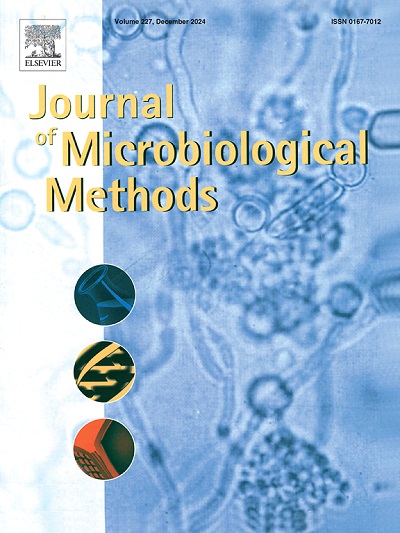Black ink staining protocol: A cost-effective substitute in quantifying arbuscular mycorrhizal colonization in plant roots
IF 1.7
4区 生物学
Q4 BIOCHEMICAL RESEARCH METHODS
引用次数: 0
Abstract
Arbuscular mycorrhizal (AM) fungi, ubiquitously distributed across diverse terrestrial ecosystems, establish symbiotic associations with the majority of vascular plants, fulfilling essential physiological and ecological functions. Mycorrhizal development represents the initiation of host-fungus interactions and serves as a metric for assessing mutualistic efficacy. However, mycorrhizal detection underscores the urgent need to develop cost-effective, efficient, and environmentally benign dyestuff. Therefore, wild-collected and laboratory-grown roots of Medicago sativa were selected. Six reagents including black ink, red ink, acid fuchsin, trypan blue, Sudan IV, and aniline blue were evaluated in conjunction with computer vision techniques to identify optimal one. Concurrently, root characteristics were quantified, and interrelationships among root traits, image quality, and colonization indices were analyzed to unravel the mechanism of their interactions. The findings demonstrated that wild roots exhibited pronounced lignification, achieving a mycorrhizal colonization rate of 100 %, which was better than the two laboratory groups. And the fungal community displayed a markedly greater colonization intensity compared to the Claroideoglomus etunicatum. Evaluation of the six reagents revealed distinct staining efficacy, with significant variations in image clarity, gray-level co-occurrence matrix (GLCM) indices, and colonization parameters across treatments. Specifically, aniline blue proved ineffective, while Sudan IV showed selective binding. Notably, black ink in glacial acetic acid achieved optimal mycorrhizal detection efficacy. Moreover, correlation matrix identified microscopic image quality as critical determinant of quantification accuracy, influenced by both reagent types and root properties, and AvgDiam exerted the most substantial impact (|R| > 0.75).
黑墨水染色方案:一种具有成本效益的替代定量丛枝菌根定植在植物的根
丛枝菌根真菌(AM)广泛分布于各种陆地生态系统中,与大多数维管植物建立共生关系,具有重要的生理和生态功能。菌根的发育代表了宿主-真菌相互作用的开始,并作为评估互惠效应的指标。然而,菌根检测强调了迫切需要开发具有成本效益,高效和环保的染料。因此,我们选择了野生和实验室种植的苜蓿根。结合计算机视觉技术对黑墨、红墨、酸性品红、台盼蓝、苏丹蓝、苯胺蓝等6种试剂进行评价,确定最佳试剂。同时,对根系性状进行量化,分析根系性状与影像质量、定植指数之间的相互关系,揭示其相互作用机制。结果表明,野生根表现出明显的木质素化,菌根定植率达到100%,优于两个实验室组。真菌群落的定殖强度明显高于尾状云母(Claroideoglomus etunicatum)。对六种试剂的评价显示出不同的染色效果,不同处理的图像清晰度、灰度共生基质(GLCM)指数和定植参数有显著差异。具体来说,苯胺蓝被证明是无效的,而苏丹红IV显示选择性结合。值得注意的是,黑色墨水在冰醋酸中的菌根检测效果最佳。此外,相关矩阵表明显微图像质量是定量精度的关键决定因素,受试剂类型和根性质的影响,其中AvgDiam的影响最大(|R| >;0.75)。
本文章由计算机程序翻译,如有差异,请以英文原文为准。
求助全文
约1分钟内获得全文
求助全文
来源期刊

Journal of microbiological methods
生物-生化研究方法
CiteScore
4.30
自引率
4.50%
发文量
151
审稿时长
29 days
期刊介绍:
The Journal of Microbiological Methods publishes scholarly and original articles, notes and review articles. These articles must include novel and/or state-of-the-art methods, or significant improvements to existing methods. Novel and innovative applications of current methods that are validated and useful will also be published. JMM strives for scholarship, innovation and excellence. This demands scientific rigour, the best available methods and technologies, correctly replicated experiments/tests, the inclusion of proper controls, calibrations, and the correct statistical analysis. The presentation of the data must support the interpretation of the method/approach.
All aspects of microbiology are covered, except virology. These include agricultural microbiology, applied and environmental microbiology, bioassays, bioinformatics, biotechnology, biochemical microbiology, clinical microbiology, diagnostics, food monitoring and quality control microbiology, microbial genetics and genomics, geomicrobiology, microbiome methods regardless of habitat, high through-put sequencing methods and analysis, microbial pathogenesis and host responses, metabolomics, metagenomics, metaproteomics, microbial ecology and diversity, microbial physiology, microbial ultra-structure, microscopic and imaging methods, molecular microbiology, mycology, novel mathematical microbiology and modelling, parasitology, plant-microbe interactions, protein markers/profiles, proteomics, pyrosequencing, public health microbiology, radioisotopes applied to microbiology, robotics applied to microbiological methods,rumen microbiology, microbiological methods for space missions and extreme environments, sampling methods and samplers, soil and sediment microbiology, transcriptomics, veterinary microbiology, sero-diagnostics and typing/identification.
 求助内容:
求助内容: 应助结果提醒方式:
应助结果提醒方式:


